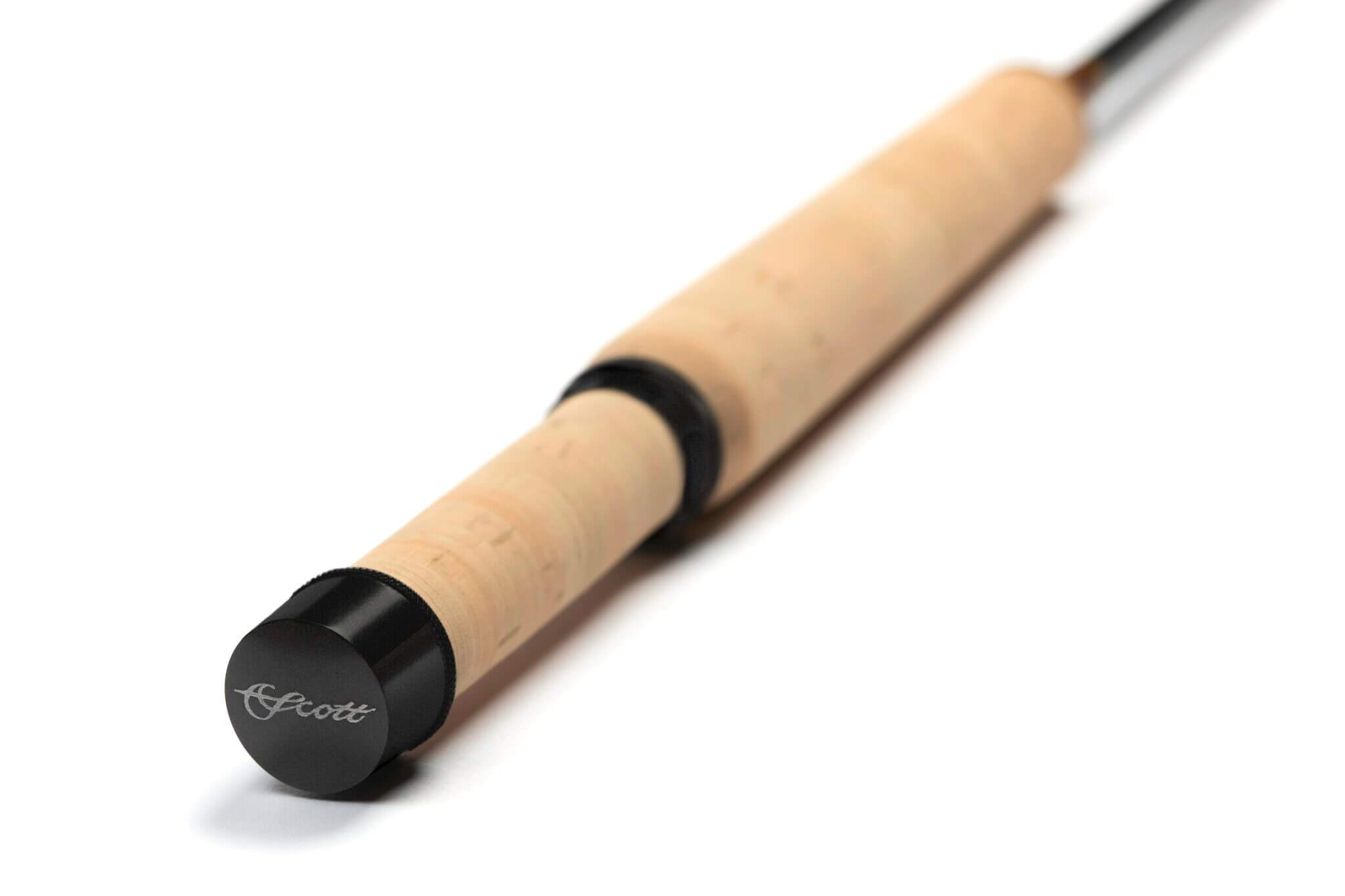 In this article, we will discuss the technological and design advancements in the Scott G Series, as well as field testing and detailed casting reviews for each model.
In this article, we will discuss the technological and design advancements in the Scott G Series, as well as field testing and detailed casting reviews for each model.
The Scott G Series is the most important new trout rod in at least twelve years, and the gutsiest re-design in the modern history of our industry. Why did Scott Fly Rods replace its famous G2 rod with a new rod that recalls the company’s hallmark original? The twofold answer: 1) Jim Bartschi designed a better fly rod in the same mold as Scott’s traditional medium action trout rods, and 2) The name “G Series” sends the message that a new rod made in the old style (medium action with tremendous range and sensitivity) is the best possible fly rod for most freshwater anglers.
In the new Scott G Series, Scott has retrenched its commitment to making the finest medium action fly rods in the world. The original Scott G, introduced in 1976, was a watershed fly rod in terms of both technology and fishing capability. The G Series was the first graphite fly rod to feature the flexible “semi-hollow” internal ferrule, a joint technology that underpinned the legendary touch and accuracy of all Scott fly rods for the ensuing two decades. The G 904 (9’ 0” 4-weight) was the first graphite 4-weight over 8’ in length ever designed. The G 845-5, introduced in 1983, was the first 5-piece graphite rod ever designed, made possible by that clever internal ferrule. The Scott G Series became the first major series of fly rods sold by any rodmaker in which multi-piece models outsold 2-piece rods.
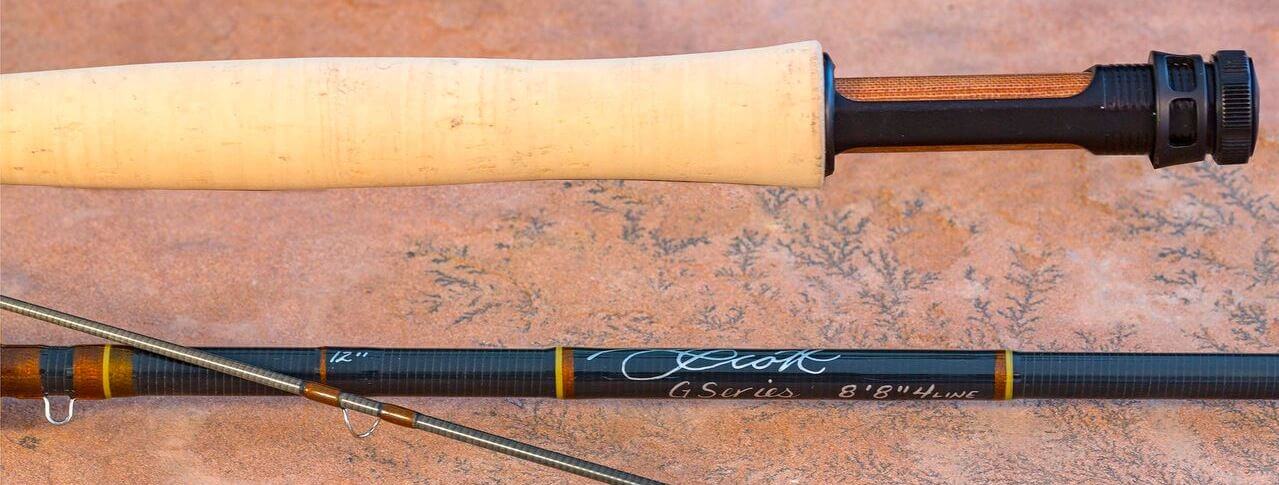
What are the physical advancements in the 2017 Scott G Series?
Superior resin. A new resin permeates the graphite fibers more evenly and thoroughly, providing greater strength with less of the added ingredient. This, in turn, allows the use of thinner graphite material without sacrificing strength.
The new Scott Internal Ferrule. Using the “less is more” approach, Bartschi has made a quantitative advancement in the design of Scott’s semi-hollow internal ferrule, reducing its weight by some 20% while improving energy transfer and feel. The joint works just like the original: a separate spigot is rolled on a mandrel and fitted inside the two sections to be joined. The ferrule bends with the rest of the rod, rather than creating flat spots in the flex profile. “Flat spots” may be hard to detect in fast action fly rods, but create a distinct “lumpy feel” in our touch-oriented medium action rods. Bartschi has reduced the amount of material used in both the spigot piece and the reinforcements inside of the adjoining pieces. As a result, the finished rod weighs less, flexes more evenly and delivers sensational feedback to the caster.
Stability and accuracy. Technological advancements do not, in and of themselves, result in better fly rods. As we are fond of saying, fly rod design is part science and part sorcery. Over the decades, a great amount of technology has been wasted on terrible rods. From the standpoint of taper design, Bartschi’s primary objective was to smooth the transition between the 2nd and 3rd pieces of these rods. In the G2 Series, this change in taper is abrupt. You can see it from a distance. G2 rods have sweet, light tips. The butt sections are much stiffer. When casting short, the angler is really only working with the light and sensitive tip. As the caster works out line, however, a bouncy action may be detected as the stiff 3rd section hesitates to flex in sync with the top sections of the rod. New G Series rods have a more continuous taper. They are smoother, more progressive, more stable and, surprisingly, a little more powerful. All of this comes from a rod that bends deeper than its predecessor.
Note the amazing recovery and stability of the G Series as our friend Masa Katsumata casts on the lawn at the Scott factory in Montrose. The rod recovers quickly with almost zero tip bounce. This is a quality you can feel with your eyes closed.
Field testing the Scott G Series: from Colorado to Patagonia
Looking for a good sign? The first fish we caught on a G Series prototype was a 28” brown in the Black Canyon of the Gunnison. We’re pretty sure that fish is dead and gone, because he looked like he was 10 years old. However, there could be no more honorable final act for a huge, ancient brown trout than to christen the next legendary fly rod from its local rod maker. Long may you rise, old brown.
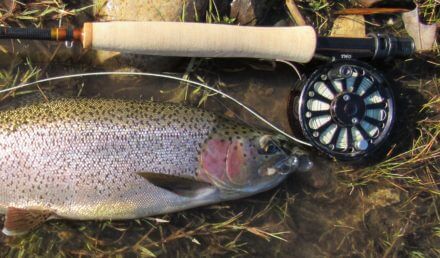 Bartschi generously supplied prototypes for us to fish throughout the winter. The GS 906-4 did some heavy winter nymphing in the Gunnison, where it excelled in every capacity. John Duncan fished the GS 885-4 in challenging conditions on his April trip to Northern Patagonia. Radians did the heavy lifting on the windiest days, but there were several days when the wind hovered around 15 mph. On these, the GS 885-4 was preferred not only by John, but also by his fellow anglers and the guides of Traful River Outfitters, who had no problem turning over 12’ dry fly leaders at 50 feet from a driftboat. The trout of the Chimehuin and Quillen fight as hard as any on the planet. As compared with the trusted Radians, all felt that the GS 885-4 allowed the angler to use one full tippet size lighter without risking breakoffs.
Bartschi generously supplied prototypes for us to fish throughout the winter. The GS 906-4 did some heavy winter nymphing in the Gunnison, where it excelled in every capacity. John Duncan fished the GS 885-4 in challenging conditions on his April trip to Northern Patagonia. Radians did the heavy lifting on the windiest days, but there were several days when the wind hovered around 15 mph. On these, the GS 885-4 was preferred not only by John, but also by his fellow anglers and the guides of Traful River Outfitters, who had no problem turning over 12’ dry fly leaders at 50 feet from a driftboat. The trout of the Chimehuin and Quillen fight as hard as any on the planet. As compared with the trusted Radians, all felt that the GS 885-4 allowed the angler to use one full tippet size lighter without risking breakoffs.
From the first prototypes back in November, we knew that our final appraisal would occur on the Lower Dolores. Ever since Scott moved to Colorado in 1993, the defining rod for the Lower Dolores has been the prevailing version of the Scott G Series. In late June, we took several models of the new rod to the Lower D., including the model against which all others will be measured: the GS 884-4. We can now say, without reservation, that even the most revered models in the G2 Series have been improved. The GS 884-4 fished flawlessly for the most presentation-sensitive trout in Colorado.
Is every model improved? Yes. Every single model is improved. The Scott G2 884-4 and G2 885-4 were arguably the best two models in the G2 Series, and widely regarded as two of the finest fly rods ever designed. Even these models have been improved. The biggest improvement is found in the 9’ rods. G2 9-footers are great angling tools, but the new versions blow them away in terms of crisp casting action, sensational lightness, loop control and accuracy. They surpass their predecessors in every category.
Scott President and Rod Designer Jim Bartschi introduces the G Series to Telluride Angler’s John Duncan with Masa Katsumata (Japanese distributor for Scott) in a special unveiling
at the Scott factory in June, 2017.
Scott G Series Casting Reviews
Scott GS 772-4
John Duncan: Somehow, the GS 772-4 feels even lighter than the G2 772-4. These short graphite rods are a real challenge for the rod designer, because there is less overall contact between the rod and fly line, and inherently diminished “feel.” The GS 772-4 is more finely tuned to its line. We can feel every inch flexing under the line’s weight. The GS 772-4 requires an extra short casting stroke at 10-15 feet. The rod feels much “tippier” than an equivalent F2 model, for comparision. A short stroke will turn over your leader beautifully, however, and as the caster works out a longer line, the rod feels wonderfully “springy” through the mid section. Any 2-weight fly line will pair nicely on this rod.
Richard Post: What a lovely casting little 2 weight. I tend to shy away from shorter graphite rods as I think they tend to feel a little clubby. This rod has changed my opinion. The GS 772 casts neatly off the tip in close with expected accuracy but much more feeling than I anticipated. The recovery speed of the rod is so precise that you think this is a faster rod until you get some line out. When you do, you are welcomed with a smooth, stable, sit back and let the line unroll joy ride. This is a smile on your face while casting kind of rod.
Scott GS 773-4
John Duncan: The GS 773-4 mirrors the 772-4 in every aspect of casting action. A quick stroke engages the tip perfectly for casts of 10-20 feet. I feel the short but sensitive rod respond to each additional foot of line that slides through the guides. In the mid-range, the rod flexes to the center with addictive elasticity, like pulling back on a rubber band. It flexes deeply at 30-40 feet, but snaps back on a true plane to the static position, creating terrific line speed, even though this is only a 3-weight.
Richard Post: You can tell when you cast them that the 773 and 772 are cut from the same cloth. The 773 liked the short stroke in close and threw lovely level loops from 10 to 20 feet off the tip. As you added more line to the cast the rod told you to wait just a little bit more on the backcast and had to stability and recovery to back it up. These G Series rods have a liveliness to them, especially in the shorter 7’7” and 8’4” lengths. This rod is unbelievably light in the hand and through the cast, but imparts the confidence to throw some line that many 3 weights don’t possess. A creek is where this rod will be most at home, but I wouldn’t be afraid of throwing some small poppers to bluegill with this rod either. Pair it with the SA Trout taper and enjoy.
Line pairings: long front tapers generally don’t fish well on short fly rods. The Rio Gold, Rio Perception, SA MPX Taper and SA Trout Taper are all good choices, but the Rio Trout Lt won’t load the rod until you have 30 feet or more in the air.
Scott GS 843-4
John Duncan: The GS 843-4 is everything we want in a general purpose light line fly rod. The length seems truly optimal for a 3-weight and the rod flexes with uncanny evenness from tip to butt. We love progressive action rods that allow the caster to feel every inch of line loading the blank. Because the materials are so thin and light, most 3-weights over 8’ have a bouncy nature. Not this one. It locks in gorgeous loops at every casting distance. Best lines include the SA Trout Taper, Rio Perception and Rio Trout LT.
Richard Post: The Scott G Series 843 strikes the perfect balance between line weight, rod length and flex profile for a small freestone 3 weight. Livelier and with a slightly quicker tempo than the 883, this is the light trout rod go to. Like all the G series rods it is light in the hand, smooth and stable through the casting stroke and simply a joy to hold up with line in the air. This will be a top choice for our local rivers and should be at the top of the list for anglers fishing smaller rivers and larger creeks. Pair it with an SA Trout or Rio Gold and remember to let the line land every now and then.
Scott GS 883-4
John Duncan: Successor to a legendary fly rod, we approached this model with substantial trepidation. We were greatly surprised and relieved to find that it surpasses the great G2 883-4 in every regard. Somehow, the GS 883-4 is lighter and more accurate. The casting action is even more progressive than the G2 883-4, allowing the dry fly angler to enjoy the springy action on casts of any length. This rod feels “connected” to its fly line in a way that is hard to describe. The original G 883 was a remarkable rod. The G2 883-4 was regarded by many as the finest 3-weight ever designed. The new GS 883-4 rises above them both. It will handle any popular 3-weight line, but we prefer those with a long head, including the SA Trout Taper, Rio Trout LT and Rio Gold.
Richard Post: Straight up, the G2 883/4 is one of my favorite fly rods. I love that rod and I was not looking forward to casting a rod that replaced the irreplaceable. But I picked up the GS 883 and it was all I’ve ever wanted. This is a rod that can read your mind. All the loop shapes and line speeds are easily attained and easily controlled. The GS 883 lays line down with a smoothness akin to wiping an eyelash off your lady’s cheek. The flex profile, the recovery speed, the progressive action all came together in a beautiful harmony of fly line and smiles. Just go cast one, you owe it to yourself. I like the Rio Gold and the SA Mastery Trout on this sweet stick.
Scott GS 844-4
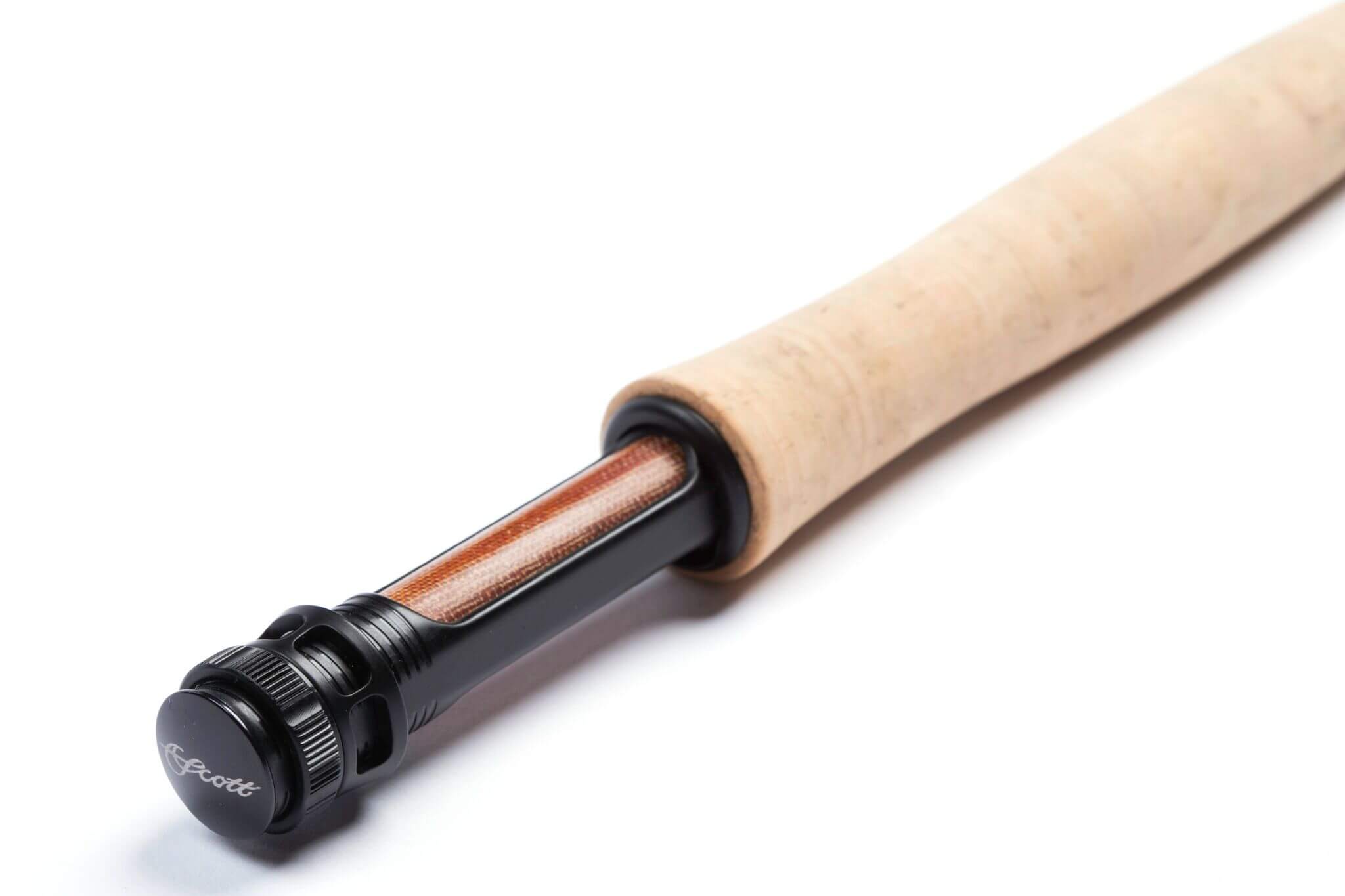 John Duncan: After the 9-footers, experienced Scott anglers may observe that the biggest improvements are found in the 8’ 4” models. The GS 844-4 was the first prototype we cast in the series. It left us speechless, with hands literally shaking. We asked Bartschi, “Can you make them all feel like this?” To which, he calmly answered, “I’ll try.” There is no reason to fish a heavy headed line on this rod. Use a conventional WF taper, such as the SA Trout Taper (regular or Wavelength), or the Rio Perception.
John Duncan: After the 9-footers, experienced Scott anglers may observe that the biggest improvements are found in the 8’ 4” models. The GS 844-4 was the first prototype we cast in the series. It left us speechless, with hands literally shaking. We asked Bartschi, “Can you make them all feel like this?” To which, he calmly answered, “I’ll try.” There is no reason to fish a heavy headed line on this rod. Use a conventional WF taper, such as the SA Trout Taper (regular or Wavelength), or the Rio Perception.
Richard Post: The 8’4” rods really impressed me in the new G Series. These rod lengths were generally ushered aside in the G2 lineup for the 8’8” rod length. It wasn’t that the shorter rods weren’t sweet in the G2 lineup, most people just preferred the 8’8”. The GS 844 is otherworldly light in the hand and through the casting stroke, and like all the GS rods the recovery speed is supernatural while maintaining that classic Scott progressive medium action. Line speed and loop control were easy, in fact the only thing that isn’t easily controllable with this rod is keeping a smile off of your face while casting. This is an ideal small freestone trout rod. Appalachian anglers should take a particular interest in this rod as their all around trout rod, as well as, dedicated small freestone Western anglers looking for one rod to handle small rivers and medium to large creeks and drainages. Pair this rod with the Rio Lightline or the SA Mastery Trout WF4F.
Scott GS 884-4
John Duncan: For obvious reasons, we were scared to cast this rod. It seemed highly likely that the GS 884-4 would offer some form of disappointment compared with its unrivaled predecessor. Casting the GS 884-4 allowed us to accept that Bartschi had actually made quantitative improvements in design, and that the whole family of new rods was likely to surpass the previous generation. The GS 884-4 is clearly superior in stability and resulting accuracy to the G2 884-4. Lovers of the original will find the new model to swing lighter and form more consistent loops with a wider variety of lines. We like the SA Trout Taper on this rod (and on every rod in the series), but the GS 884-4 also pairs nicely with a Rio Perception, Rio Gold or Rio Trout LT.
Richard Post: The G2 884 was the favorite all around trout 4 weight at the Telluride Angler for many years. Obviously, we were skeptical that the new rod could improve upon its predecessor. Well, skeptics can kick rocks. The GS 884 is surprisingly superior in every way. The GS 884 is lighter, throws a wider variety of loop shapes, including tight loops, and feels livelier and more springy without being bouncy. You can notice these changes with the simple waggle test. Hold the GS 884 and the G2 884 side by side. Without a line or reel on the rod, waggle both and notice how quickly the GS 884 comes back to static. The difference is remarkable. When casting the GS 884, the caster drives the loop backwards and feels confidence exude through the line straightening. The forward cast is natural and noticeable and the loops drive ahead flat and parallel. A truly wonderful rod to cast. SA Wavelength Trout was my favorite line with this rod. This is an exceptional all around mid length trout tool.
Scott GS 904-4
John Duncan: The improvements in the 9’ rods are spectacular. In the previous series, casting the 9-footers proved that 8’8” was the optimal length in those rods. Now, there is literally no difference in the feel and performance. This is no small miracle. Longer rods cast best with long headed lines, so choose an SA Trout Taper or Rio Trout LT for optimal performance.
Richard Post: This was my favorite rod in the G Series lineup. I’d been wanting to see a really sweet 9 foot 4 weight from Scott and they delivered. I find a lot of 9 foot 4 weights to be too fast and stiff to perform with the small dry fly like I would like. These rods tend to require a 4.5 to 5 weight line to adequately load them and they leave me feeling like they’re more of a light 5 weight than a true 4 weight. Not the GS 904. This rod held the line in the air with confidence. This rod cast with intuitive control. This rod begged me to throw another cast. Not only my favorite in the G Series lineup, but my favorite 9 foot 4 weight from Scott rods. If you’re in the market for a 9 foot 4 weight, put this thing at the top of your list with the Sage MOD 490 and the GLoomis Asquith 490. I like the Rio Gold and the SA Mastery Trout on the GS 904.
Scott GS 775-4
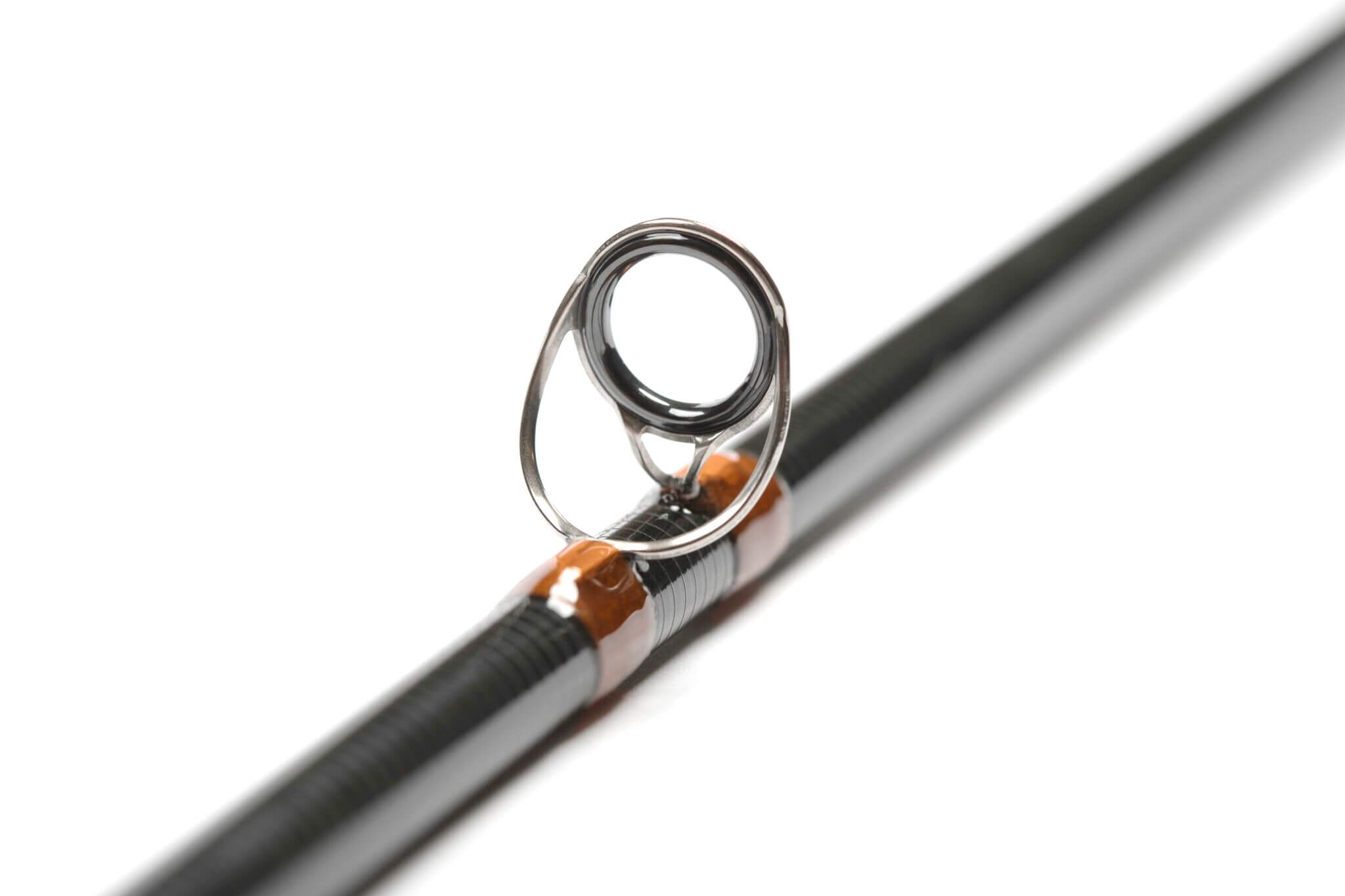 John Duncan: This rod is not as “progressive” as most others in the series. Not surprisingly, it doesn’t really load until it bends into the middle of the rod. It requires a little more line and casting power to develop a nice casting loop. The GS 775-4 has a stiffer tip (which makes the rod a little slower in casting action) than the 773-4 or 772-4. This is necessary to drive a heavier fly line, but also prevents the rod from casting well under 10-15 feet. Appalachian anglers will love the range. The GS 775-4 was designed to catch solid fish on medium sized and large flies on relatively small rivers. This is an East Coast game, and the GS 775-4 is definitely the right tool for the job.
John Duncan: This rod is not as “progressive” as most others in the series. Not surprisingly, it doesn’t really load until it bends into the middle of the rod. It requires a little more line and casting power to develop a nice casting loop. The GS 775-4 has a stiffer tip (which makes the rod a little slower in casting action) than the 773-4 or 772-4. This is necessary to drive a heavier fly line, but also prevents the rod from casting well under 10-15 feet. Appalachian anglers will love the range. The GS 775-4 was designed to catch solid fish on medium sized and large flies on relatively small rivers. This is an East Coast game, and the GS 775-4 is definitely the right tool for the job.
Lines: This rod casts terrific with short-headed lines. The SA MPX and Rio Gold are the best pairings among common weight forward lines. Titan tapers, 5-weight streamer lines and other “load and go” tapers will bring the best out of the GS 775-4.
Richard Post: This is a rod for a very specific task, targeting large fish in small places with bigger flies. The GS 775 is a tunnel casting machine, capable of throwing a tight accurate loop through rhododendron tunnels or inside of a house with ceiling fans. The rod loaded predictably in the middle of the blank once you had 15 feet outside of the tip of the rod. Unlike many shorter graphite rods of heavier line weights, the GS 775 had no tip bounce and did not feel overly stiff or require a heavier line to make it bend and load. This rod can handle the heavier lines though without having the weight of the line fold the rod and collapse the loop. If you’re looking for a shorter 5 weight for pulling big wild brown trout out of tight places, this is your rod. I went to college in Boone, NC and I can think of a few places where this specialized stick would come in handy. Rio Gold, Rio Perception, SA MPX, and the SA Trout are all on the menu for this rod.
Scott GS 885-4
John Duncan: This is another rod that we loved from the first prototype. Upon casting it with an SA Trout Taper, one of us commented, “this is the finest trout rod I have cast in my life.” It surpasses the G2 885-4 most significantly in stability. There is zero bounce in this rod, unless you’re using a really short-headed line. Slightly heavier lines, like the Rio Gold and SA MPX, load the rod deeper and yet smoothly, thanks to the aforementioned taper improvements. Our favorite line pairing is still the SA Trout Taper, however.
Richard Post: I liked the GS 885 over the 905. The GS 885 is lighter in the hand and through the casting stroke. This rod formed loops instantly with no line and flexed progressively and proportionately to the amount of line out of the rod tip. Wait a little bit in the backcast and let the stability in the blank sooth your senses as you dump out a supremely smooth and level loop at all distances. This is probably the best all around trout rod in the G Series lineup. Small dries and long leaders, shorter heavier leaders with a dry dropper, and dare I say even an indicator rig, will all be smooth and sweet on the 885. This is also an exceptional rod for a guide to put in a clients hand. It is rod that makes casting, mending and overall fly fishing make sense. Guides, think about clients with flies in the zone more often with less tangles, more fish in the net, and lighter pockets at the end of the day. You should probably get one. SA Trout tapers were my favorite, but the Rio Gold was great too.
Scott GS 905-4
John Duncan: As far as “feel” is concerned, this is the best Scott 9’ 5-weight we have ever cast. It’s just sensational. Gorgeous loops roll off the tip from 20’ to 75’ with so little casting effort you will think you’re sleeping. This is the single most improved rod in the series. You’ll capitalize on its silky progressive action by using a long headed line, like an SA Trout Taper, SA Mastery Distance Taper or Rio Gold or Rio Trout LT.
Richard Post: The GS 905 is an excellent all around trout rod. This rod is a perfect example of a rod that will serve novice and expert equally well. Many beginners think that a high end rod won’t benefit them, and I could not disagree more. High end rods make casting more intuitive, especially a medium action rod. The GS 905 throws very flat parallel loops that extend out from the rod tip like a set of railroad tracks. The load point along the blank was large, predictable and forgiving. An excellent all around 5 weight for the angler looking for a medium action trout rod.
Scott GS 886-4
John Duncan: The “Hopper/Dropper” special will be a boat-fishing favorite for anglers who prefer the mojo of a 6-weight fly line when casting large dry flies or just about any dry/dropper rig. This rod feels similar to the others in the series, but should usually be fished with a shorter headed line, such as the Rio Perception, SA Titan Taper or SA MPX.
Richard Post: The GS 886 is a noticeably more powerful fly rod than the other rods in the series. This rod had a smooth stability that inspired confident line control. Hopper dropper set ups out of the boat would be a dream with this rod. The GS 886 is an old school style trout rod with modern design and materials. I really like moderate 6 weights for fishing in the West, especially out of the boat. This rod has the bottom end to turn big fish in heavy current and throw large wind resistant dry dropper rigs. It features a soft enough tip for light tippet and an easy action that makes mending easy and intuitive. Another great guide stick for the working man on the oars. Rio Gold and SA Expert Distance lines were wonderful.
Scott GS 906-4
John Duncan: Moderate action 9’ 6-weights often feel heavy, hinged or wobbly. Continuing on theme for this series, the MS 906-4 swings with the ease of your favorite 4-weight, but has plenty of reserve for chucking sink tips, streamers and awkward nymph rigs. This rod proves that the easiest fly rod to cast with a strike indicator rig is one that flexes deeply enough to form a real casting loop with a short amount of line in the air. You’ll make fewer false casts with the GS 906-4 than with most classic fast action 6-weights. Faster is not always better. When choosing your nymphing line, stay away from those with an extra heavy head, such as the Rio Grand. Aggressive heads cast great on this rod, but overlining is not a benefit. Stick with more traditional tapers including the Rio Gold and SA MPX.
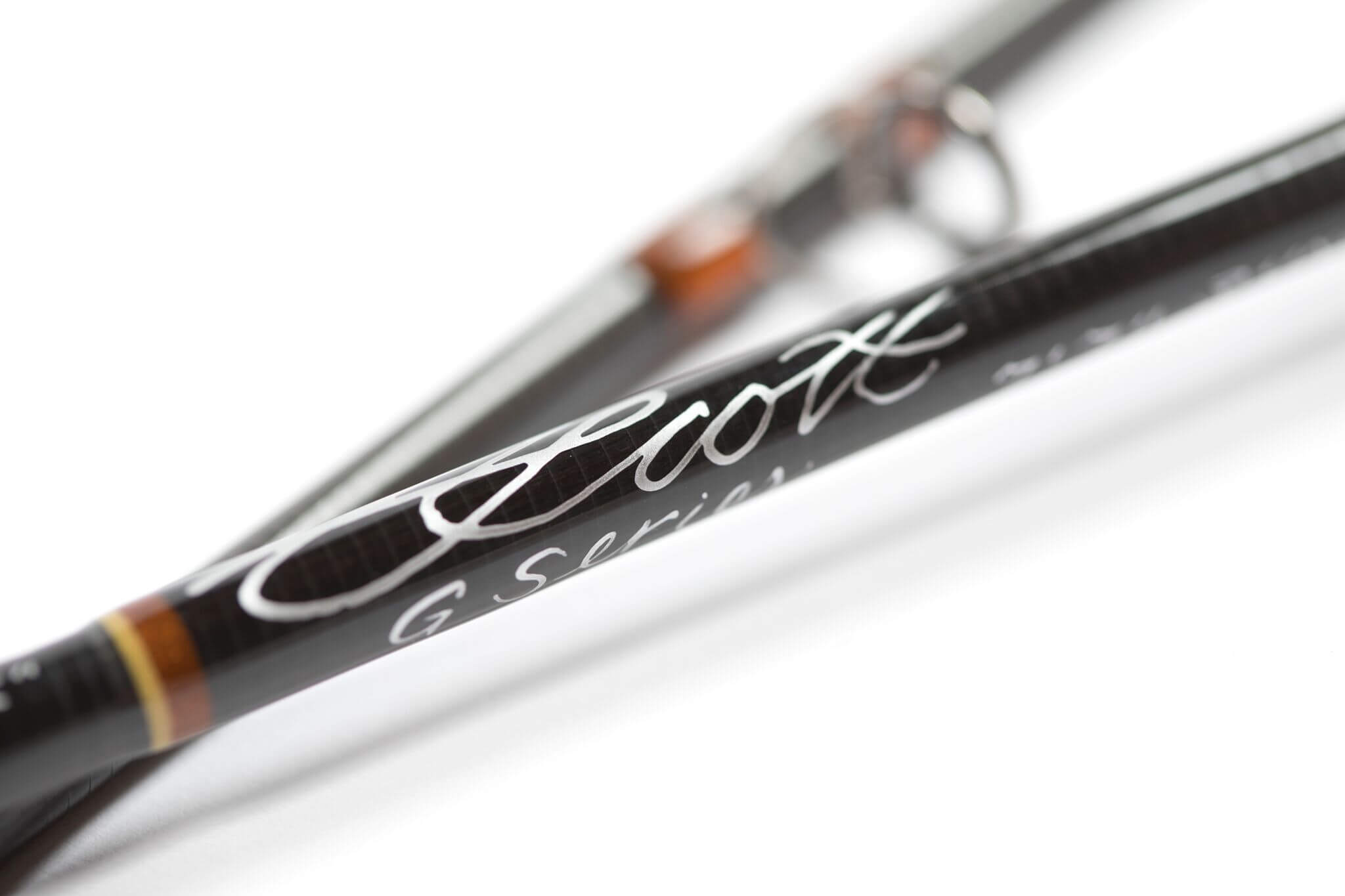 Richard Post: This rod was my other favorite along with the 904. I really liked the ratio between lightness and power. Distance was easy, very easy, and this rod was supremely stable with most of the fly line outside of the tip. Highly accurate and highly intuitive like the rest of the GS models, the GS 906 should be seriously considered as a Gunnison rod. I really like moderate 6 weights for Western trout fishing. I like the added weight of the line to carry large hoppers and stonefly droppers and to help out in the wind. I think the 6 weight line gives the angler an edge in these conditions by making it all easier. However, that 6 weight has to mend, roll cast, and fish in close like a 5 weight. The moderate action 6 weight has been overlooked by the industry and anglers at large in recent years, let me tell you, the GS 906 is a rod not to be overlooked. It could be the rod that changes how you think about the 6 weight line. The Rio Gold was my favorite line.
Richard Post: This rod was my other favorite along with the 904. I really liked the ratio between lightness and power. Distance was easy, very easy, and this rod was supremely stable with most of the fly line outside of the tip. Highly accurate and highly intuitive like the rest of the GS models, the GS 906 should be seriously considered as a Gunnison rod. I really like moderate 6 weights for Western trout fishing. I like the added weight of the line to carry large hoppers and stonefly droppers and to help out in the wind. I think the 6 weight line gives the angler an edge in these conditions by making it all easier. However, that 6 weight has to mend, roll cast, and fish in close like a 5 weight. The moderate action 6 weight has been overlooked by the industry and anglers at large in recent years, let me tell you, the GS 906 is a rod not to be overlooked. It could be the rod that changes how you think about the 6 weight line. The Rio Gold was my favorite line.
